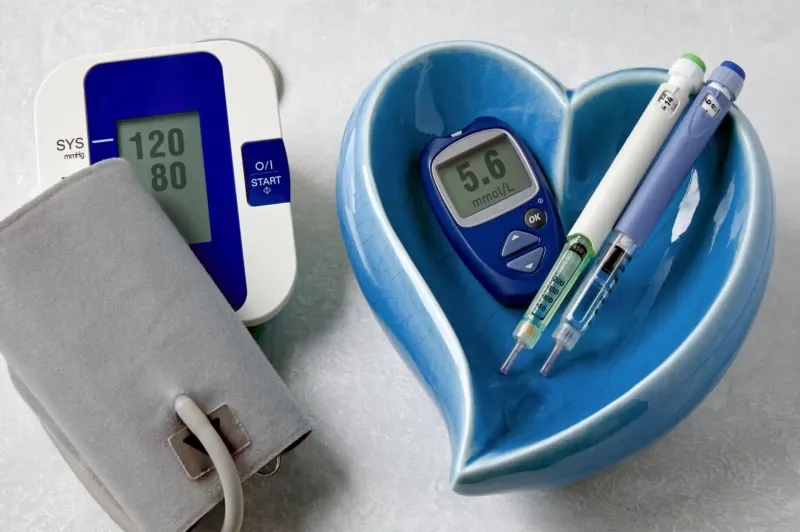
Introduction: Understanding Type 2 Diabetes and its Impact on Health
Type 2 diabetes, also known as diabetes mellitus, is a metabolic disorder characterized by high blood sugar levels. It occurs when the body becomes resistant to insulin or does not produce enough of it. This condition can have serious health implications and requires proper management and treatment.
Exploring the Concept of Preferred Walking Speed
Walking speed refers to how fast an individual is able to walk. It can be influenced by various factors such as age, health condition, and fitness level. Gait analysis, on the other hand, involves the study of a person's walking pattern and mechanics. This analysis can provide valuable insights into any abnormalities or imbalances in the way a person walks. Locomotion is a broader term that encompasses all forms of movement, including walking. It includes activities such as running, jumping, crawling, and climbing. Physical activity refers to any bodily movement that requires energy expenditure. Walking and other forms of exercise fall under this category. Exercise tolerance is an important measure of one's fitness level. It refers to the ability to perform physical activity without experiencing excessive fatigue or discomfort. By gradually increasing exercise tolerance through regular physical activity, individuals can improve their overall health and well-being.
Read more >> The Importance of Quality Sleep and How to Improve Your Sleep Patterns
The Link Between Type 2 Diabetes and Preferred Walking Speed
The speed at which one walks has been linked to the risk of developing diabetes. Studies have shown that individuals with a slower walking speed may be more susceptible to diabetes. Furthermore, diabetic patients often experience impaired mobility, making it difficult for them to walk normally. The impact of diabetes on walking ability can vary depending on the severity of the condition and its complications.
Factors Affecting Preferred Walking Speed in Individuals with Type 2 Diabetes:
1.Peripheral neuropathy and reduced sensation in the feet(diabetic neuropathy)
2.Muscle weakness and loss of muscle mass(sarcopenia)
3.Poor cardiovascular health(diabetic cardiomyopathy)
4.Impaired balance and coordination(diabetic neuropathy)
5.Pain or discomfort during walking due to arthritis or other complications related to diabetes
Benefits of Maintaining an Optimal Walking Speed for Individuals with Type 2 Diabetes
One intriguing finding in the field of health research is the relationship between walking speed and mortality risk in people with type 2 diabetes. Studies have shown that individuals who walk at a slower pace may have a higher risk of mortality compared to those who walk at a faster pace. This highlights the importance of maintaining and improving cardiovascular health through regular walking exercise. In addition to its impact on mortality risk, walking also plays a crucial role in managing blood sugar levels for individuals with type 2 diabetes. Engaging in physical activity like walking helps to improve insulin sensitivity, allowing better control over blood glucose levels. Therefore, it is recommended that individuals with type 2 diabetes incorporate regular walks into their daily routines as part of their overall diabetes management plan. Overall, the benefits of walking for individuals with type 2 diabetes are two-fold: it can help improve cardiovascular health and assist in managing blood sugar levels effectively.
Tips for Improving Preferred Walking Speed in Individuals with Type 2 Diabetes:
1.Incorporating regular aerobic exercises into daily routine (e.g., brisk walking)
2.Strength training exercises to improve muscle strength and prevent muscle loss
3.Balance and coordination exercises to reduce the risk of falls
4.Consulting with healthcare professionals for personalized exercise recommendations
5.Maintaining a healthy diet and managing blood sugar levels to support overall health and mobility
Conclusion: The Importance of Preferred Walking Speed for Individuals with Type 2 Diabetes
Research suggests that walking speed may serve as a valuable indicator of potential complications related to diabetes. Individuals with slower walking speeds may be at a higher risk for such complications. On the other hand, physical activity plays a crucial role in managing diabetes. Engaging in regular exercise and maintaining an active lifestyle can help control blood sugar levels and improve overall health outcomes. Moreover, it is important to emphasize the significance of maintaining mobility for the general well-being of individuals with diabetes. Being able to move freely not only enhances quality of life but also reduces the likelihood of developing secondary health issues associated with sedentary behavior.








Showing 0 verified guest comments